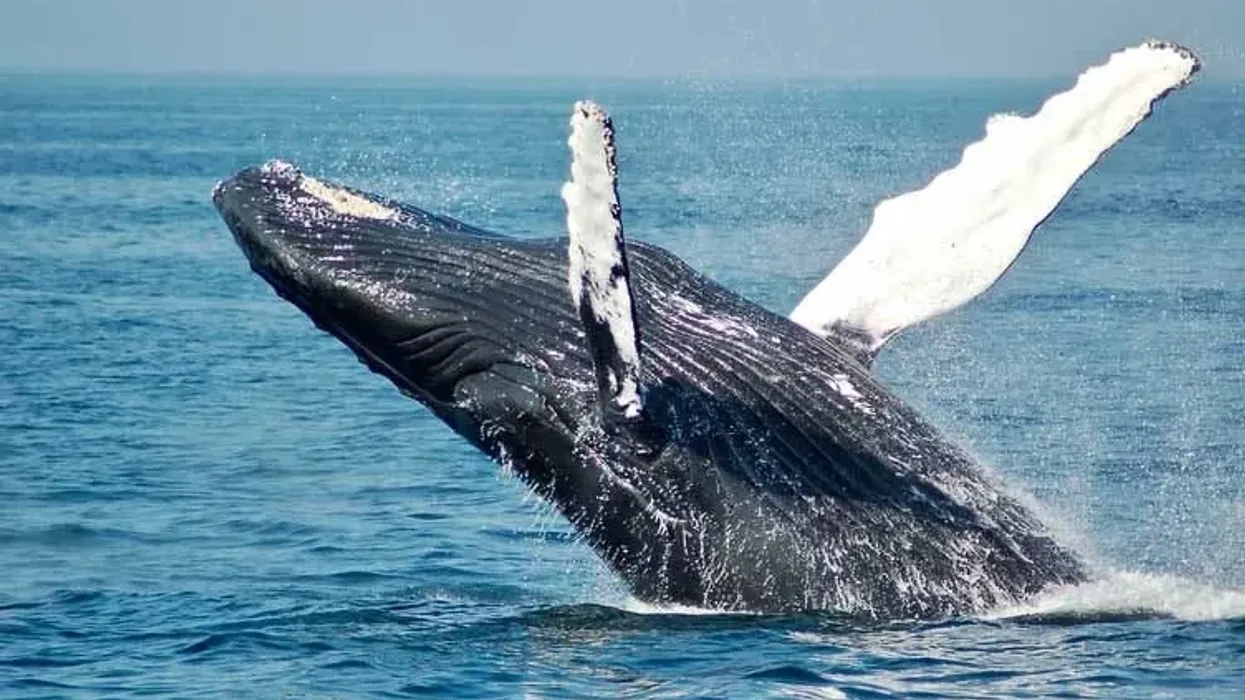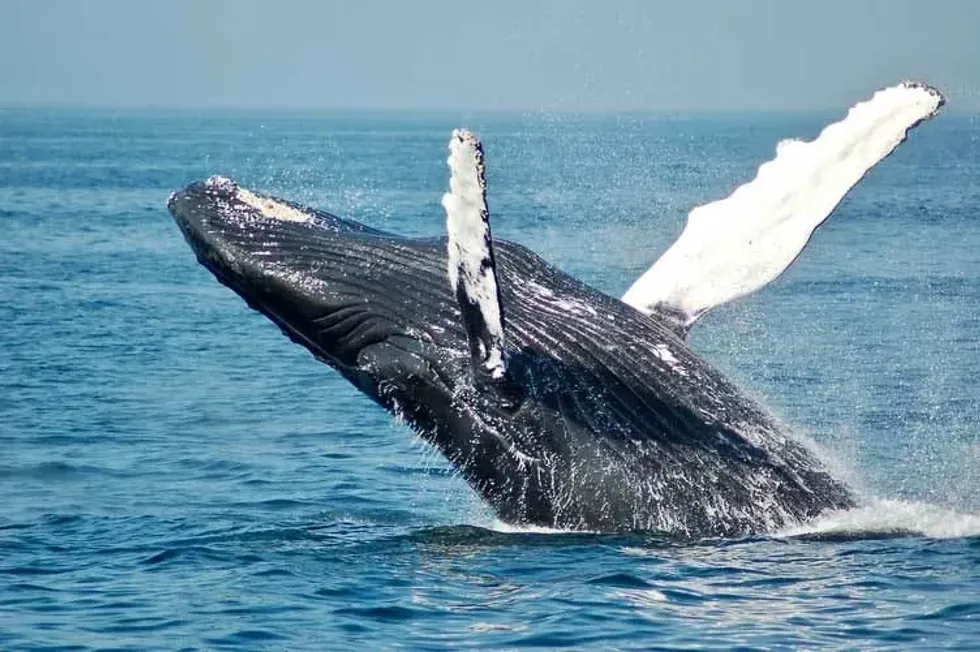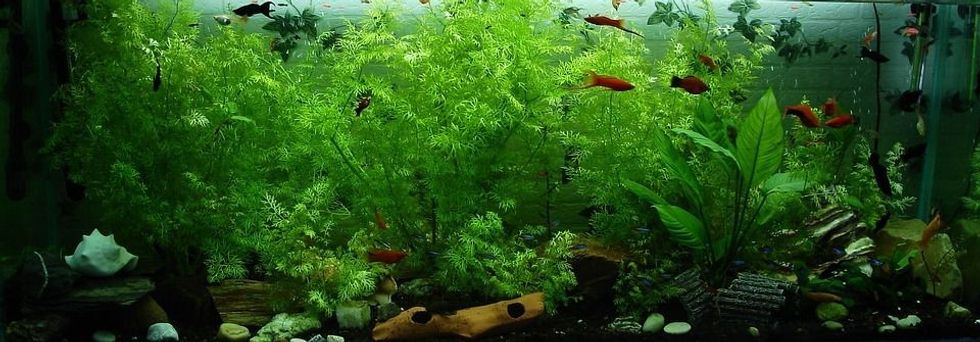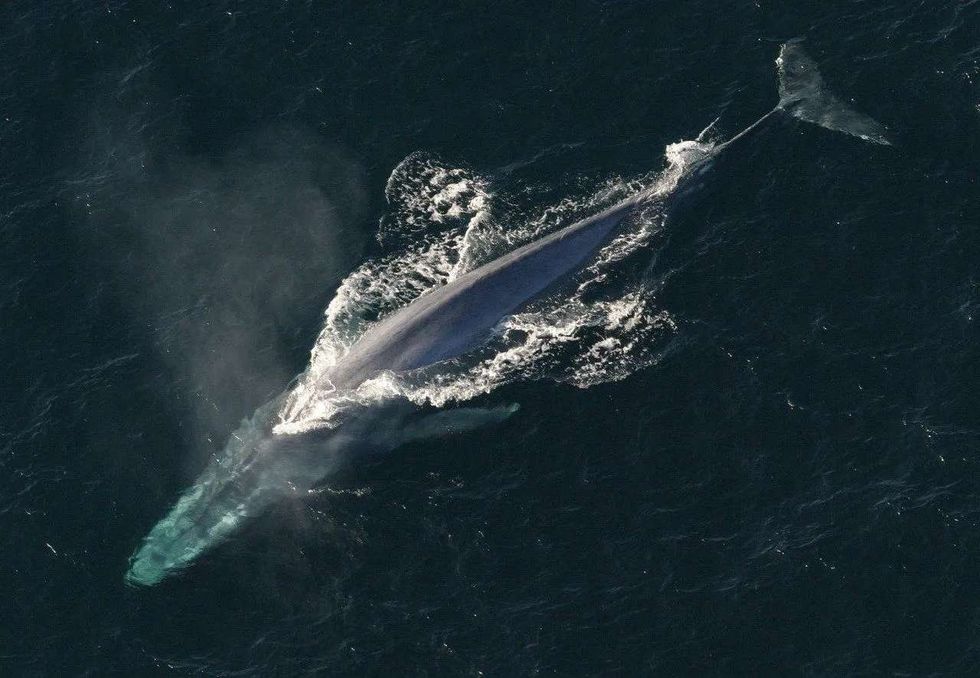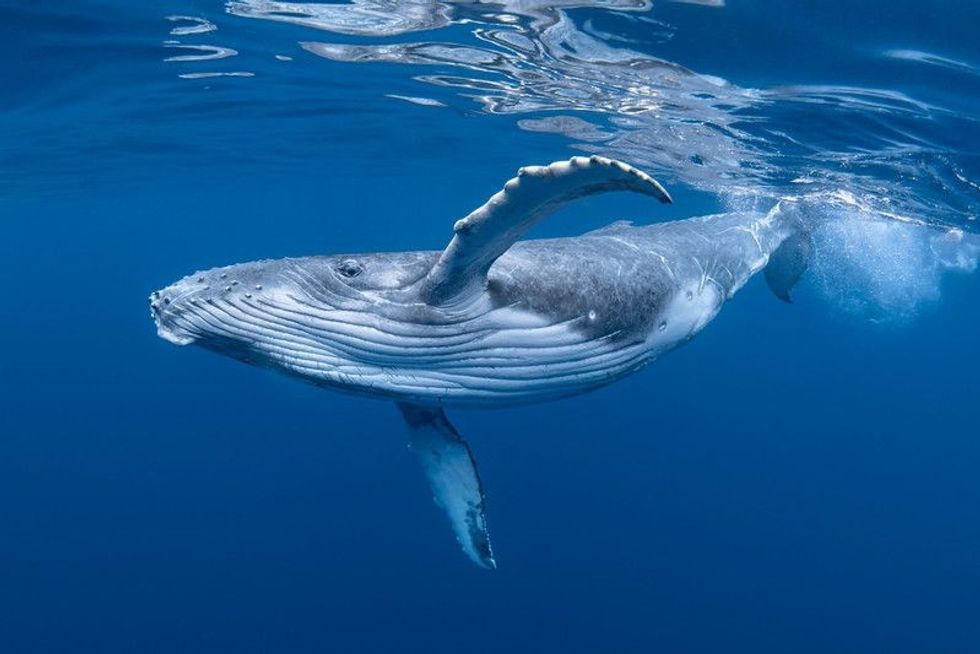Whales are very social mammals. They are considered to be special because they are majestic and invoke a strong sense of awe in all of us.
The term 'whale' refers to some of the larger marine animals in the Cetacea order. The term 'whale' may apply to any cetacean, like porpoises and dolphins, but it is more often used for those that are longer than 10 ft (3 m). The 8.8 ft (2.7 m) dwarf sperm whales are an exception.
Whales are the heaviest live or extinct mammals, with the blue whale (Balaenoptera musculus) exceeding a record height of more than 98 ft (30 m) and 200 tons (181437 kg). The sperm whale is known to be the world's biggest toothed killer. Females of some species are bigger than males, resulting in sexual dimorphism.
Baleen whales don't have a single tooth; instead, they have baleen scales that allow them to remove water while keeping the krill they eat. The sperm whale has conical teeth, which on the other hand, are used to eating tuna or squid by whale sharks or toothed whales.
Here on our page, we have lots of amazing facts about whale evolution and lifestyle that everyone will enjoy. Let's look at these interesting facts; if you like these, then do read our fin whale and bowhead whale facts.
Whale Interesting Facts
What type of animal is a whale?
Whales are a type of marine mammals (warm-blooded animals that breathe air).
What class of animal does a whale belong to?
Whales belong to the class of Mammalia. A whale is not a fish because whales are warm-blooded mammals, while fish are cold-blooded and lay eggs!
How many whales are there in the world?
The total number of whales in the world is about 75,000, as per a survey.
Where does a whale live?
Whales live in the ocean or the sea, mostly sub-tropical ocean, and polar sea. You can find a humpback whale in the Amazon only during the wintertime. Blue whales can be found in the North Pacific and Atlantic Oceans. The false killer whale is found in tropical waters.
What is a whale's habitat?
Whales can only survive in water and prefer to remain in areas where it is colder such as the Arctic. This is why, during the winter, you'll see them along the coasts of an ocean or a sea.
They move to other areas of the ocean to maintain a sufficient body temperature. Many whale species are restricted to a certain region in the sea.
Who does the whale live with?
Most whales prefer to live in a pod. Pods refer to groups of whales that live together. Everything they do, they do together. They also indulge in hunting for prey and migration together. However, baleen whale species have been seen living alone rather than in a pod.
How long does a whale live?
Killer whales live for about 10 years, while the humpback whale's lifespan ranges from 45-50 years. Beluga whales live for 35-50 years, and blue whales live the longest, between 80-90 years. Lucky blue whales! North Pacific right whales live for 70 years, and fin whales live for around 45 years.
How do they reproduce?
During the breeding season, the males, also known as bull whales, copulate with females in a mating ritual that differs by species. Blue whales tend to achieve sexual maturity between 5-10 years of age.
To reproduce, they migrate towards breeding grounds, which are near the equator. Blue whales have a complicated mating ritual.
The male and female whales spend some time rolling about in circles before diving back into the underwater abyss. They take off and cross the surface, and males tend to thrust their penis into the vulva and ejaculate as they do so.
The embryo grows within the mother's uterus since blue whales are placental mammals. After three months of gestation, the blue whale fetus develops at a rate of 1 in (2.5 cm) per day, reaching 12 ft (4 m) by the seventh month.
After a 12-month pregnancy, the calf is born, and it swims to the surface.
The mother protects the young calf for a year, feeding it food up to 200 lb (91 kg) of milk per day. Six months are spent nursing their young newborn calves and feeding them food.
What is their conservation status?
The conservation status of these creatures varies from species to species. There are 19 species of whales like blue whales.
The following species are Endangered: blue whales, North Pacific right whales, North Atlantic right whales, and baleen whales. The Vulnerable species are sperm whales, finback whales, and gray whales. The species listed as Least Concern are humpback whales, bowhead whales, southern bottlenose whales, southern right whales, and pygmy whales.
Whale Fun Facts
What do whales look like?
Whales have bodies shaped like a torpedo with stiff necks, flippers on their limbs, no external ear flaps, a wide tail fin, and a flathead. Indeed, the shape of its body helps it swim and protect better. Except for monodontids and ziphiids that have narrow eye orbits, long snouts, and eyes on the sides of the head.
How cute are they?
They have a cute appearance, thanks to their wide-set whale eye set in a rounded whale skull and a bump on their forehead.
How do they communicate?
Whales make sounds that are thought to perform a variety of functions. Whale songs are melodic sounds used by certain animals to communicate.
Depending on the animal, these whale sounds or songs can be very noisy. Just clicks have been heard from humpback whales, while toothed whales use sonar to produce up to 20,000 watts of sounds and are heard for miles. Whales use two different types of acoustic signals: whistles and clicks.
How big is a whale?
Their body size ranges from 8.4-98 ft (2.6-29.9 m). The blue whale is the largest animal and the largest whale in the world. The blue whale size is about 98 ft (30 m).
How fast can a whale swim?
The speed of the biggest blue whale is about 13 mph (21 kph). The speed of the orca is around 35 mph (56 kph) which is among the fastest in marine animals.
How much does a whale weigh?
The weight of whales varies from 0.148-200 ton (135-181,437 kg). The biggest whale on earth, i.e. blue whale, can weigh around 418,878 lb (190,000 kg).
What are the male and female names of the species?
A male whale can be referred to as a bull, while a female is known as a cow.
What would you call a baby whale?
A baby whale can also be called a calf.
What do they eat?
Whales are all carnivorous predators. Fish and cephalopods are the primary food sources for odontocetes, followed by crustaceans and bivalves.
Baleen plates are an essential part of a whale's filter-feeding operation. A baleen whale opens its mouth wide and scoops up the thick shoals of prey (such as krill, copepods, small fish) and vast amounts of water and passes it through baleen plates.
Krill and plankton are the main sources of food for mysticetes, supplemented by crustaceans and other invertebrate food items. Blue whales have been feeding themselves entirely on krill; the minke whale eats mostly schooling fish; the sperm whale eats squid; the gray whale mainly eats bottom-dwelling invertebrates.
Are they dangerous?
Whales are not really dangerous. They can tolerate humans but are not as friendly as dolphins. Killer whales' attacks have rarely occurred, with the most recent incident being in 2019, where four humans died. But there aren't any records of a whale eating a human.
Would they make a good pet?
Whales are very intelligent and friendly, but it can be really difficult to tame them. Hence, they would not make a good pet.
Did you know...
Many whales explore oceans, namely, blue whales, white whales, beluga whale knees, albino whale, blue whale, and curvier's beaked whale; whales in the Southern Ocean include right whale, humpback whale, and sei whale.
The narwhal whale is a medium-sized toothed whale with a thick 'tusk'.
A whale skeleton is made up of real bones and can weigh up to 7,700 lb (3493 kg).
There are several species of whales, however, there are only two types of whales – baleen and toothed.
Different species of whales possess a different number of tooth compositions; while some tend to have none, some are blessed with 240. The average length of the sperm whale's teeth is 3.9-7.8 in (10-20 cm).
The Bryde's whale is related to the blue and hum whales.
In February 2019, some fishermen found a carcass of a whale in the Amazon.
The false killer whales are oceanic dolphins that highly resemble killer whales.
Willy was played by Keiko (killer whale), a male orca, in the 1993 movie 'Free Willy'. Ark whale is a Basilosauras in the game ARK. Shamu whale was one of the killer whales that performed in shows in San Diego.
Whale milk contains so much fat that it has the consistency of toothpaste.
The sperm whale's distance traveled in a lifetime is around a million miles.
The blue whale is the largest animal on the planet; the blue whale's heart is equivalent to the size of a mini car. The heart of a blue whale (whale in general) weighs up to 400 lb (181 kg).
Whale breaching is the act of a whale jumping out of the water.
The wax extracted from whale vomit is very expensive. Whale poop has a bread-crumby consistency and smells like dog poop. Whales, like any other animal, do fart.
Whales can hold their breath for 90 minutes straight.
Fishing (whaling) or fishing for the whales (i.e. commercial whaling) is a process of hunting whales. Whaling is illegal in most countries.
Humans use whales for their meat and other body parts. Whale oil is the oil obtained from the whale's blubber, which promoted commercial whaling. Japan and Iceland are the only two countries using the provision of commercial whaling.
What type of whale was Moby Dick?
In Herman Melville's 1851 novel, Moby Dick was the name of the sperm whale who is the main antagonist.
What is the oldest living whale?
The bowhead whale is the world's oldest whale, with an estimated lifetime of 200 years.
Here at Kidadl, we have carefully created lots of family-friendly animal facts for everyone to discover! Learn more about some other mammals, from our Pyredoodle facts and mouflon facts pages.
You can even occupy yourself at home by coloring in one of our free printable whale coloring pages.

